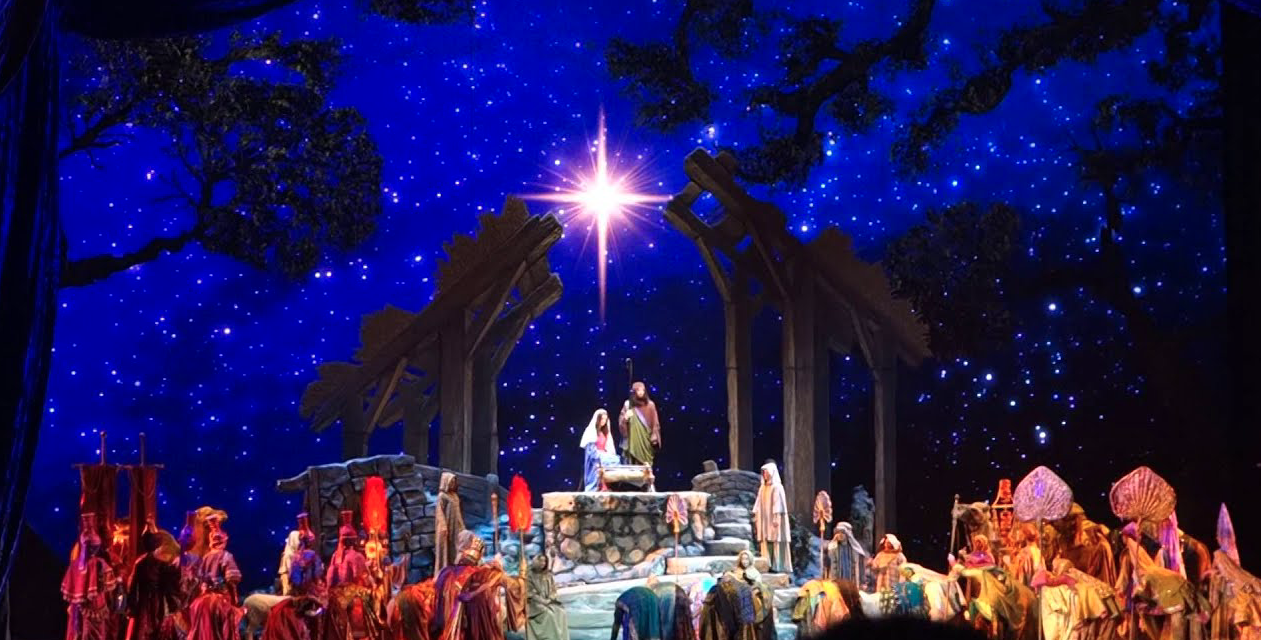Christmas traditions run deep everywhere, but especially in New York City, and few places in Gotham more dramatically than Radio City Music Hall.
Opening on December 27, 1932, with a wide-ranging show that included singing, dancing, and even a trapeze artist – and lasting until 2 A.M. – the iconic Art Deco theater has been home to countless concerts, movies, and for the 89th consecutive year this December, the annual “Christmas Spectacular.”
With dueling pipe organs playing Christmas carols, the famous Rockette dancers kicking up their long legs in perfect unison, a 3D Santa Claus sleigh flying through the sky, along with fake snow falling on city scenes rising out of an orchestra pit, generations have made the trek to the southwest corner of 6th Avenue and 50th Street an annual pilgrimage.
Incidentally, military officials were so impressed with the hydraulic system in the theater when it opened that they met with Radio City executives in the 1930s to cull from them the technology, eventually implementing it into United States aircraft carriers.
My colleague Dan, along with his wife, Sue, and their family attended one of the famed Christmas shows last week. They posted some photographs online, and a glimpse brought back all kinds of memories. Growing up on Long Island, we didn’t attend every year, but it was always memorable when we did. As a little boy, I recall being wowed by the 60-foot-high entrance hall, along with all the glass chandeliers, murals, and mirrors. There’s also a grand staircase.
“How did you like it?” I asked Dan. “It was phenomenal,” he responded.
“Did they …” I began to ask, only he cut me off, anticipating my question.
“Towards the end, Sue turned and said, ‘This would be perfect, if only they would acknowledge the birth of Christ.’”
Dan then smiled, added, “And then they did!”
For the last 89 years, Radio City Music Hall’s Christmas program has concluded with a live Nativity presentation – a massive procession of animals, including camels, donkeys, sheep and, of course, an actor portraying Joseph and an actress as Mary, both adoring and celebrating the birth of the baby Jesus.
As the scene unfolds, the voice of a narrator is heard reciting “One Solitary Life,” the 1926 poem written by James Allan Francis:
He was born in an obscure village
The child of a peasant woman
He grew up in another obscure village
Where He worked in a carpenter shop
Until He was thirty, He never wrote a book
He never held an office
He never went to college
He never visited a big city
He never traveled more than two hundred miles
From the place where He was born
He did none of the things
Usually associated with greatness
He had no credentials but Himself
He was only thirty-three
His friends ran away
One of them denied Him
He was turned over to His enemies
And went through the mockery of a trial
He was nailed to a cross between two thieves
While dying, His executioners gambled for His clothing
The only property He had on earth
When He was dead
He was laid in a borrowed grave
Through the pity of a friend
Nineteen centuries have come and gone
And today Jesus is the central figure of the human race
And the leader of mankind’s progress
All the armies that have ever marched
All the navies that have ever sailed
All the parliaments that have ever sat
All the kings that have ever reigned put together
Have not affected the life of mankind on earth
As powerfully as that one solitary life
It’s understandable to lament the hostility directed towards Christians and Christmas today, the increased references to Santa and the now common omission of the true reason for the season. But in a city known for its secularism, and which has even been known to celebrate its sin, thousands of unsuspecting theatergoers are hearing the remarkable life story of Jesus.
This is great news and reason to cheer and celebrate.






